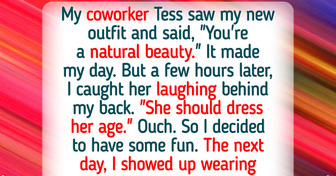13 Family Conflicts That Sound Straight Out of a Soap Opera


Back in the day, finding out if you were pregnant was like solving a mystery with no clear clues. People tried all sorts of bizarre methods, from analyzing bodily changes to seeking advice from mystics. Fast-forward to today, and a pregnancy test is 5,000 steps or one click away.
Throughout history, there were some truly unusual attempts to create a foolproof pregnancy test. There was a time when people thought a frog could do the job — yes, we’re serious — and there’s more. We’d love to hear which one you think was the strangest one yet.
Ancient Egyptian women pioneered the earliest pregnancy test by using barley and wheat seeds. They’d urinate on these seeds and if they sprouted quickly, it signaled a positive pregnancy. Moreover, the type of seed that sprouted was believed to predict the baby’s gender. If the barley sprouted, it was going to be a boy and if the wheat sprouted, the baby would be a girl.
Modern studies show the wheat/barley test method can accurately identify around 85% of pregnancies.
In 1927, German scientists Aschheim and Zondek devised a pregnancy test. They injected urine from a woman into a young female mouse. If, upon dissecting the mouse, they found its ovaries had grown and produced eggs, the test was positive. This indicated the presence of hCG, a hormone from the placenta, confirming pregnancy. Later, a similar method was used with rabbits instead of mice.
A few years later, British scientist Lancelot Hogben introduced a similar method to the one with mice or rabbits, but this time using frogs. Because frogs lay eggs, there was no need to dissect them later to check for ovulation. This marked the first reusable pregnancy test in history and was the fastest available at the time, providing results in under 12 hours. The frog test was used worldwide for 3 decades, from the 1940s to the 1960s, involving tens of thousands of frogs.
Recently, the frog test was depicted in the TV series Lessons in Chemistry. Initially seeming like fiction for dramatic effect, it turned out to be a true, old-school pregnancy test.
In the 1960s, everything changed, marking the start of what we now know as pregnancy tests. Most importantly, these tests no longer relied on using live animals. They could be conducted in doctor’s offices, and by the 1970s, advancements had made them much more accurate. These tests utilized antibodies and could detect pregnancies as early as 2–3 weeks after conception.
Scientists developed antibodies that specifically targeted and adhered to hCG. These antibodies were then attached to the surface of sheep’s blood cells. By observing how the cells clumped together when mixed with a woman’s urine, scientists could determine whether a pregnancy was present or not.
In 1970, the first DIY pregnancy tests became available on the market. These kits resembled a chemistry set for students, complete with test tubes, droppers, dried capsules containing sheep’s blood cells, and hCG antibody serum. The kit involved a 10-step process and could provide a positive pregnancy result with 97% accuracy and a negative result with 80% accuracy. This marked a significant milestone, as women could now perform pregnancy tests at home, eliminating the need for a visit to the doctor’s office.
The modern pregnancy test, as we recognize it today, was introduced in 1988. In the US alone, over 20 million pregnancy tests are sold each year. These tests can detect the presence of hCG around 8 days after ovulation. Thanks to medical progress, these tests are now more convenient and affordable than ever before.
While pregnancy can be a mysterious journey with its unique symptoms and mood swings, many women have shared interesting tips they didn’t know before getting pregnant, but wish they had known.











